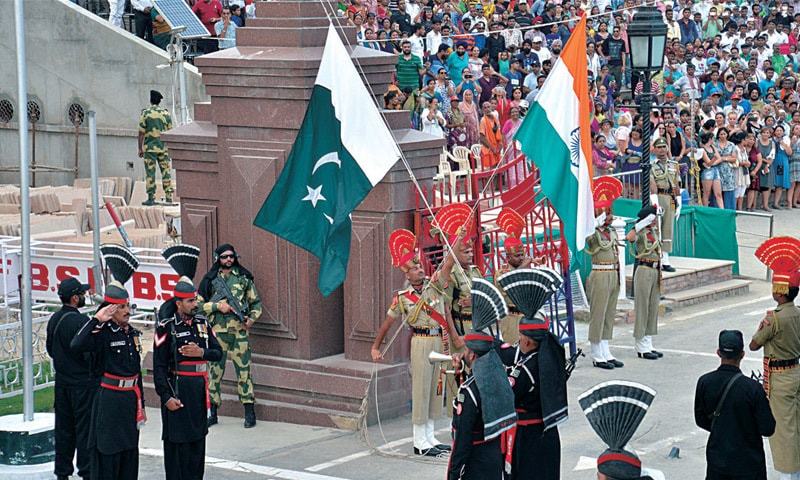18 Oct , 2021 By : monika singh

By rejecting the unanimous international advice to form an inclusive government and respect human rights, including that of women, the interim Taliban government has not only hurt its prospects to consolidate power internally, but is also pushing the country towards economic meltdown. What the Taliban right now needs is international aid and release of frozen funds to run the government.
Extending economic support and legitimacy are the instruments that the US and western world are now using as leverages to keep the Taliban on a tight leash. At a virtual meeting of G20 countries on October 12, the European Union pledged $1.15 billion in aid to Afghanistan and neighbouring countries "to avert a major humanitarian and socio-economic collapse". But the Taliban requires nearly $500 million a month, as its only source of income at present is custom duty.
What has alarmed the international community is a series of attacks by Islamic state -- Khorasan Province (ISKP) -- killing around 300 people in the last three months. With two major strikes in Shia Mosques in Kunduz and Kandahar, the earlier claim made by the Taliban that the group has limited presence in Kunar and Nangarhar provinces is proving to be incorrect. The situation was further compounded by the release of video by Al Qaeda (AQ) of its supreme leader, Ayman Al-Zawahiri, on the twentieth anniversary of 9/11. That would mean that the US is back to square one, as its invasion of Afghanistan had failed to diminish the threat from AQ. In fact, now the US and its allies face threats from AQ and IS, both having suffered at their hands in the war on terror.
China, the emerging superpower, was also jolted when it realised that the ISKP bomber that carried out the suicide blast at Kunduz on October 8, was a Chinese Uyghur. That has dampened the initial enthusiasm among the Chinese rulers who were eyeing the opening of economic opportunities in Afghanistan. China is facing similar threat from Uyghur separatists in Pakistan, targeting its investments in the China-Pakistan Economic Corridor. Uyghur separatists are suspected to be responsible for the suicide attack on a bus carrying Chinese workers at Dasu hydroelectric project in Kohistan in July this year killing nine of them.
After realising the gravity of the surging ISKP, the international community is now having doubts about the capability of the Taliban to honour its commitment that it would not allow its soil to be used for terrorism against any other country. At two meetings with the Taliban in Doha (Qatar), the US officials have linked giving aid and unfreezing of Afghan assets worth $9.5 billion with the performance of the former in countering the threats to the US and its allies from AQ and IS.
In fact, what it wants is a blank cheque to target such threats using over the horizon capabilities over the airspaces of Pakistan and Afghanistan. Both countries have so far not acceded to the US demands due to strong anti-American sentiments there. This is despite a threat to their economic stability. The loss of US clout with the two countries should be a cause of serious concern for India.
The US' primary focus in dealing with threats to its interests has given elbow room to Pakistan to reverse its policy on Kashmir. Two major encounters with infiltrating groups in Poonch district this month in which nine army personnel lost their lives is just one manifestation of the changed policy. 'The Resistance Front', that is carrying out a spate of targeted killing of civilians in Kashmir, is only a facade created by Pakistan for maintaining deniability. Regular droppings of weapons by drones in Punjab and J&K are meant to provide weapons to disgruntled youth who are willing to pick up arms. But picking up a large number of people in panic by security agencies without identifying the killers would prove to be counterproductive. Participative democracy and secular narrative are the biggest anti-dote to extremism. Creating favourites would undermine the democratic process. The meeting that the prime minister held with J&K leaders should be carried forward in the spirit of accommodation rather than confrontation.
It is time that both India and Pakistan should realise that the threat of AQ and IS from Afghanistan is far severe than what both countries face now. Therefore, rather than hurting each other, a cool-headed approach like the one that has helped in sustaining cease-fire at the line of control and international border in J&K is required. An international cooperative approach would be needed to deal with the ghoulish scenario developing in Afghanistan, as IS looks to carve out a territory for itself after having lost the same in Syria and Iraq. Expecting a government that lacks legitimacy at home and abroad to deal with the threats from AQ and IS would be outrightly foolish.
0 Comment